-
February 26, 2020 by Total Fire and Safety

Restaurant fires destroy more than property. Restaurants hold priceless memories of celebrations and firsts, meetings with important people, backgrounds for special announcements or the reliable spot to pick up favorite weekday takeout meals. With a fire, they all go up in smoke—literally. Restaurant fires can be devastating, not only to the owners and patrons, but to the employees as well.
Nearly 8,000 restaurant fires occur each year resulting in $165 million in property damage. According to the NFPA, cooking equipment was the leading cause of restaurant fires (61%), electrical equipment (9%), heating equipment (9%), and smoking materials (7%). What’s the best way to protect your restaurant from a fire? Understand the dangers and prevention measures you can take to skirt disaster in your dining or takeout establishment.
DANGER:
Exhaust Systems and Ductwork
The vents and fans behind ovens and stoves accumulate a buildup of grease. Since the vents and fans extract flammable vapors, a spark can light grease buildup. Oven hoods above stoves, can also harbor flammable vapors from contaminated cooking air. This can feed through the exhaust system and cause a fire hazard. Also included in these systems are grease traps. Most commercial kitchens are required to maintain a grease trap preventing oils and fats from clogging sewers.
PREVENTION
- Clean all areas daily
- Twice a year, have a thorough hood cleaning by professionals
- Clean grease traps monthly, quarterly, or yearly as mandated by the NFPA
DANGER:
Gas Leaks
Gas leaks are the most catastrophic cause of restaurant fires because they cause an explosion. Gas leaks occur when faulty equipment is unable to support the flow of gas and leaks flammable gas in the air. A simple electrical device can ignite the gas and lead to an explosion.
PREVENTION
- Be alert and detect the signs of a gas leak (gas smell, orange/yellow flames, extinguished pilot lights)
- Perform equipment inspections daily and replacement of worn out equipment
DANGER:
Electrical Problems
Heat from unsafe or poor wiring in switches, sockets, or plugs can spark flammable or combustible materials. Overloading outlets, outdated wiring, and overpowering kitchen equipment can lead to a fire or even explosion.
PREVENTION
- Use only commercial equipment that is up-to-code
- Update wiring that can handle a busy kitchen
In the unfortunate event a restaurant fire occurs, a fire suppression system is your best protection. A restaurant fire suppression system is designed to provide fire protection for restaurant cooking appliances, exhaust hoods, and ducts. A fire suppression system detects fires through heat sensors, often before the kitchen staff does. When automatically discharged, the fire can be suppressed at its earliest stages. The result is minimal damage to the kitchen and minimal equipment down time.
Keep your restaurant kitchen safe from fires by properly installing and maintaining a working fire suppression system and empowering employees with fire safety and response training. It can mean the difference between a localized fire and a major blaze.
If you’re ready to safeguard your kitchen from a restaurant fire, Total Fire and Safety can test, service, and install fire suppression systems. TFS also provides first aid and fire extinguisher training on-site. Give us a call today and let our professionals provide “total” assurance your restaurant is protected from fire. Call us at 630.960.5060.
Category: Business Safety, Fire Equipment Inspections, Suppression system, Total Fire and Safety Tags: commercial fire protection, commercial fire safety, commercial fire suppression, fire and safety equipment, fire and safety needs, fire supression system, Total Fire & Safety | Comments Off on The Dangers and Prevention of Restaurant Fires
-
January 27, 2020 by Total Fire and Safety
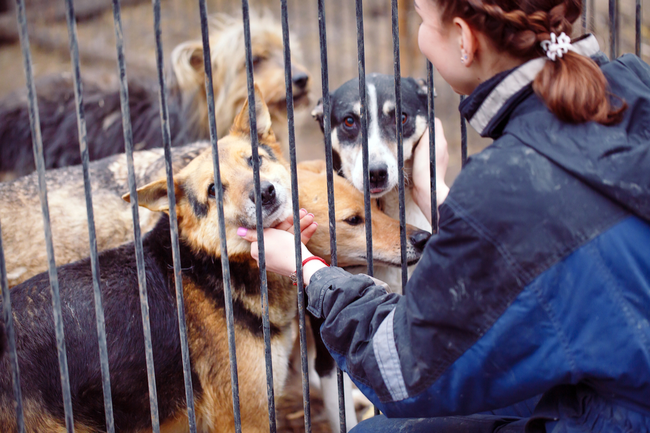
How important is the fire code for animal shelters? Deadly fires at kennels and animal shelters are not uncommon across the U.S. In the past year, over 100 dogs have died in kennel fires, including here near Chicago.
On the night of January 14, 2019, a West Chicago animal kennel went up in flames. Thirty-one dogs perished in the fire. The exact cause of the fire is unknown, but investigators determined no staff was present at the time and no working fire sprinklers were on property. The kennel did have fire detectors, but no one was around to hear them.
The tragedy prompted lawmakers to come up with legislation to ensure such an event never happens again. The new law, signed in August, went into effect January 1. The legislation requires kennels to be staffed 24/7 or have sprinkler systems or alarms that alert local fire departments.
When it comes to arming animal shelters with lifesaving equipment, Total Fire and Safety can help with the installation of …..
Wireless Fire Alarms
- Preferred by fire departments, they are more reliable than land-based systems for their quick and accurate response.
- They can save phone line costs.
- They reduce false alarms to fire departments
- Minimal and guaranteed wireless radio alarm monitoring fees
Fire Sprinkler Systems
- A working fire sprinkler is 96% effective in containing a fire.
- Monthly, quarterly, and annual inspections are necessary to ensure safety and keep your building fire code compliant.
- TFS uses the most up-to-date technology and thorough process to prevent sprinkler failure.
Working fire extinguishers can keep a small fire from getting out of control when someone is in the facility. Every business needs working fire extinguishers at the ready, and be trained to use them.
- A fire extinguisher is your first line of defense, 24/7.
- 30% of fire extinguishers are not in working order. We complete a 12-point inspection to make sure they are fire ready.
- On-site training is provided to guarantee proper employee usage.
All it takes is basic fire protection to save animal and human lives.
Illinois’ new fire code will help protect our furry friends from another senseless tragedy and prevent irreparable damage to lives, structures, and pocketbooks. Total Fire and Safety can equip your facility with the latest fire protection and help maintain the equipment installed. Give us a call today at (630) 960-5060.
Category: Business Safety, Fire Alarm Monitoring, Fire Extinguishers, Fire Extinguishers, Fire News, Fire Safety, Sprinkler Systems, Total Fire and Safety Tags: commercial fire safety, commercialfiresprinkler, employee training, fire and safety equipment, fire and safety solutions, fire safety in the news, Firesprinkler, Total Fire and Safety, wireless fire alarm monitoring, wireless fire alarms, wireless fire alarms for business | Comments Off on A New Fire Code for Animal Shelters in Illinois!
-
December 23, 2019 by Total Fire and Safety

We wish you the warmth and cheer of the season!
Thank you for your continued support throughout the year.
From all of us at Total Fire & Safety
Twelve Days of Fire Safety
On the first day of safety, Total Fire gave to me…
A safe and code compliant facility!
On the second day of safety, Total Fire gave to me…
Two emergency plans
and a safe and code compliant facility!
On the third day of safety, Total Fire gave to me…
Three eyewash stations
Two emergency plans
and a safe and code compliant facility!
On the fourth day of safety, Total Fire gave to me..
Four first aid kits
Three eyewash stations
Two emergency plans
and a safe and code compliant facility!
On the fifth day of safety, Total Fire gave to me…
FIVE WIRELESS ALARMS
Four first aid kits
Three eyewash stations
Two emergency plans
and a safe and code compliant facility!
On the sixth day of safety, Total Fire gave to me…
Six extinguishers inspected
FIVE WIRELESS ALARMS
Four first aid kits
Three eyewash stations
Two emergency plans
and a safe and code compliant facility!
On the seventh day of safety, Total Fire gave to me…
Seven exit signs Six extinguishers inspected
FIVE WIRELESS ALARMS
Four first aid kits
Three eyewash stations
Two emergency plans
and a safe and code compliant facility!
On the eight day of safety, Total Fire gave to me…
Eight backflow inspections
Seven exit signs
Six extinguishers inspected
FIVE WIRELESS ALARMS
Four first aid kits
Three eyewash stations
Two emergency plans
and a safe and code compliant facility!
On the ninth day of safety, Total Fire gave to me…
Nine sprinkler systems
Eight backflow inspections
Seven exit signs
Six extinguishers inspected
FIVE WIRELESS ALARMS
Four first aid kits
Three eyewash stations
Two emergency plans
and a safe and code compliant facility!
On the tenth day of safety, Total Fire gave to me…
Ten safety trainings
Nine sprinkler systems
Eight backflow inspections
Seven exit signs
Six extinguishers inspected
FIVE WIRELESS ALARMS
Four first aid kits
Three eyewash stations
Two emergency plans
and a safe and code compliant facility!
On the eleventh day of safety, Total Fire gave to me…
Eleven fire pumps serviced
Ten safety trainings
Nine sprinkler systems
Eight backflow inspections
Seven exit signs
Six extinguishers inspected
FIVE WIRELESS ALARMS
Four first aid kits
Three eyewash stations
Two emergency plans
and a safe and code compliant facility!
On the twelfth day of safety, Total Fire gave to me…
Twelve new extinguishers
Eleven fire pumps serviced
Ten safety trainings
Nine sprinkler systems
Eight backflow inspections
Seven exit signs
Six extinguishers inspected
FIVE WIRELESS ALARMS
Four first aid kits
Three eyewash stations
Two emergency plans
and a safe and code compliant facility!
Category: Fire Alarm Monitoring, Fire Equipment Inspections, Fire exits, Fire Extinguishers, Fire News, Fire Safety, Sprinkler Systems, Total Fire and Safety, Uncategorized Tags: commercial fire safety, fire and safety equipment, fire and safety solutions, Fire Extinguisher, fire safety, Total Fire & Safety, wireless fire alarms | Comments Off on Happy Holidays from Total Fire & Safety
-
October 2, 2019 by Total Fire and Safety
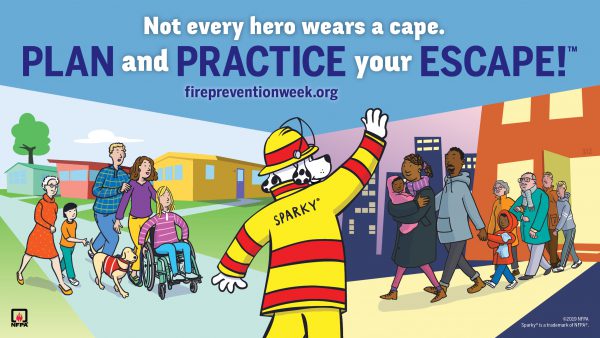
Fire prevention week has been designated as October 6-12, 2019 by the National Fire Protection Association (NFPA). Fire prevention week has a long history, dating back to 1925, when President Calvin Coolidge proclaimed fire prevention week as a national observance. Now, it has become the longest running health observance in the country.
At Total Fire & Safety, we use this time to reiterate to our clients how important it is to stay compliant with NFPA codes and keep everyone within their buildings, warehouses and commercial spaces supplied with fire extinguishers, sprinklers, and suppression systems that are ready to go when fire strikes.
The theme of this year’s campaign is “Plan and Practice Your Escape.” So how can a business observe National Fire Prevention Week? Here’s a few ideas.
- Share safety information from the NFPA with your employees. Not only will it help them at work, but at home too!
- If you do not do so regularly, heed the theme of the program and “plan and practice your escape.” Every employee should be mindful of their best options in the event of an emergency.
- Call your fire protection service for an inspection of your equipment and make sure all your extinguishers, alarms, sprinkler systems, etc. are in working order.
- Consider a training class for fire extinguisher operation, first aid, or CPR.
Around the Total Fire & Safety service area, the observance is being commemorated with lots of events at community fire stations. For more information, see the website for each individual fire department.
Friday, Oct. 4
Saturday, Oct. 5
- Tinley Park Fire Department: 17355 68th Court, Tinley Park, 9 a.m. – 1 p.m. Open House
- Schaumburg Fire Department: 950 W. Schaumburg Road, Schaumburg, 11 a.m. – 2p.m. Public Safety Open House
- Clarendon Hills Fire Department: 316 Park Ave., Clarendon Hills, 11 a.m. – 2 p.m. Open House
- Minooka Fire Department: 7901 E. Minooka Road, Minooka, 11 a.m. – 2 p.m. Open House
- Hazel Crest Fire Department: 2903 W. 175th St., Hazel Crest, 9 a.m. – 12 p.m. Open House
- Frankfort Fire District: 20101 La Grange Road (Event address), Frankfort, IL 60423, 9:30 a.m. – 12:30 p.m. Gas Safety Event
- Palatine Fire Department: 39 E Colfax Street, Palatine, IL 60067, 10 a.m. – 2 p.m. Open House
- Darien-Woodridge Fire District: 7550 Lyman Ave., Darien, IL 60561, 10 a.m. – 1 p.m. Open House
- Oswego Fire Protection District: 3511 Woolley Road, Oswego, IL 60543, 11 a.m. – 3 p.m. Open House
- Calumet City Fire Department: 24 State Street, Calumet City, IL 60409, noon
Sunday, Oct. 6
- Belvidere Fire Department: 123 S. State Street, Belvidere, IL 61008, 1 – 4 p.m. Open House
- Mokena Fire Protection District: 19853 S. Wolf Road, Mokena, IL 60448, 7:30 a.m. – noon Open House
- Lake Zurich Fire Department: 321 South Buesching Road, Lake Zurich, IL 60047, 11 a.m. – 2 p.m. Open House
- Batavia Fire Department: 1400 Main St, Batavia, IL 60150, 11 a.m. – 3 p.m.
- McHenry Township Fire Protection District: 3610 W. Elm Street, District Administration Office, McHenry, IL 60050, 11 a.m. – 1 p.m.
- Naplate Fire Department: 2000 W Ottawa Ave, Naplate, IL 61350, 12 – 3 p.m.
- Manteno Community Fire Protection District, 13 S WALNUT ST, MANTENO, IL 60950, 12 – 3 p.m.
Monday, Oct. 7
- Western Springs Fire Dept: 4353 Wolf Road, Western Springs, IL 60558, 6 – 8:30 p.m. Open House
Wednesday, Oct. 9
- Lombard Fire Department: 50 E St Charles Road, Lombard, IL 60148, 6 – 8 p.m. Open House
- Downers Grove Fire Department: 6701 Main Street, Downers Grove, IL 60516, 6:30 – 8:30 p.m. Open House
Thursday, Oct. 10
Friday, Oct. 11
- South Chicago Heights Fire Department: 185 W Sauk Trail, South Chicago Heights, IL 60411, 5:30 – 7:30 p.m. Open House
Saturday, Oct. 12
- Northbrook Fire Department: 1840 Shermer Road, Northbrook, IL 60062, 9 a.m. – 12 p.m. Open House
- Crystal Lake Fire Rescue: 100 W Woodstock St, Crystal Lake, IL 60014, 9 a.m. – 12 p.m. Open House
- Prospect Heights: 10 E. Camp McDonald Rd, Prospect Heights, IL 60031, 9 a.m. Open House
- La Grange Park Fire Department: 447 N. Catherine Ave., La Grange Park, IL 60526, 10 a.m. – 1 p.m. Open House
- Elgin Fire Department: 650 Big Timber Road, Elgin, IL 60123, 10 a.m. – 3 p.m. Open House
- City of Rockford: 204 S. First St., Rockford, IL 61104, 10 a.m. – 1 p.m.
- Homewood Fire Department: 17950 Dixie Highway, HOMEWOOD, IL 60430, 11 a.m. to 2 p.m.
- Plainfield Fire Protection District: 23748 W. 135th Street, Plainfield, IL 60544, 11 a.m. – 2 p.m. Open House
- Westmont Fire Department: 6015 S. Cass Ave., Westmont, IL 60559, 11 a.m. – 3 p.m. Open House
- Alsip Fire Department: 11946 S. Laramie, Alsip, IL 60803, 1 – 3:30 p.m. Open House
- Calumet City Fire Department, Station 2: 1270 Pulaski Rd, Calumet City, 12 – 3 p.m. Open House
Sunday, Oct. 13
- North Palos Fire Protection District: 10629 S Roberts Rd, Palos Hills, IL 60465, 7 a.m. – 12 p.m.
- Byron Fire Department: 123 S. Franklin St., Byron, IL 61010, 11 a.m. – 3 p.m. Open House
- Elmhurst Fire Department: 601 S York, Elmhurst, IL 60126, 12 – 4 p.m. Open House
Wednesday, Oct. 23
- Chicago Ridge Fire Department: 10063 Virginia, Chicago Ridge, IL 60415, 6 – 9 p.m.
Fire protection and preparation is not just a week-long observance but a 365 day a year, 24/7 job. At Total Fire & Safety, we have everything you need to keep your employees and tenants protected. If we can ever assist your business with NFPA compliance for your commercial fire protection, contact us at 630-960-5060.
Category: Business Safety, Fire Equipment Inspections, Fire exits, Fire News, Fire Safety, Health and Safety, LED Lighting, NFPA Compliance, Total Fire and Safety Tags: commercial fire safety, emergency exit lights, fire and safety equipment, fire and safety needs, fire and safety solutions, fire safety in the news, lifesafety | Comments Off on 2019 Fire Prevention Week is for Businesses Too!
-
September 25, 2019 by Total Fire and Safety
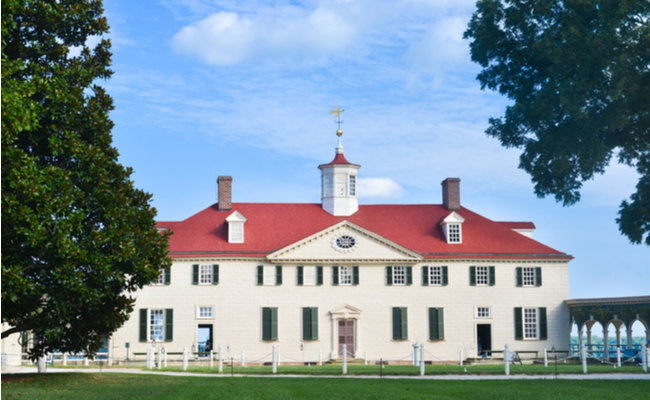
If you have ever visited a historic building, what do you notice? Old documents, precious artwork, impeccable craftmanship, and… fire protection equipment? Hopefully your answer to the latter is no. Ideally, historic properties should still maintain the look and feel of an era gone by, but how do you do it and still install and maintain fire equipment that’s up to code?
Everyday commercial buildings are damaged by fires, causing a huge loss for any business. However, these damages can be repaired, sometimes improving the building from its previous structure. This is not the case for historic properties. The true extent of the loss is more significant than the cost of simply restoring the building. Any artifacts, documents, etc. that are lost represent a priceless piece of our heritage.
For the fire safety expert, the challenge of fire protection in a historic building presents three distinctive challenges:
Preserving the Historic Character
In order to protect historic buildings, sometimes structural engineers, preservation specialists and the building managers must get involved in addition to the fire protection experts (TFS). Together they design a solution that meets the needs of NFPA compliance without ruining the historic character of a building. For example, a historic door cannot be replaced with a fire-proof door, however installing sprinklers on either side of the door may be the answer.
Fire safety is prioritized even with our most beloved historic institutions. For example, currently there is a major renovation going on at Mount Vernon, the home of our first president, George Washington. Part of this extensive construction is major improvements to the fire suppression system. When all is said and done, fire safety for Mount Vernon and its visitors will be vastly improved for generations to come.
Total Fire & Safety’s client roster includes many historic buildings, especially in the Village of Downers Grove. We are proud to be able to keep visitors safe while maintaining the distinctive character of each building.
Staying Out of Sight
Ideally, fire protection systems must sufficiently protect a building but remain aesthetically pleasing. One common cause of concern is the fire sprinkler system. Not only do fire sprinklers damage a building’s contents, but they can deface the historic structure. The answer lies in coming up with creative solutions for fire sprinklers:
1. Use copper tubing vs. black or steel pipe to blend in with the building’s architecture.
2. Faux materials can be used that resemble the buildings time period to conceal fire sprinkler pipes.
3. Install painted fire sprinkler heads to match the area.
Another form of hidden fire protection commonly used in historic buildings is wireless fire alarms. Wireless alarms are an ideal, minimally invasive solution when needing to preserve the look and feel of a building. Other advantages to wireless fire alarms include:
- Wireless alarm monitoring provides faster response
- No cables are required for installation
- They eliminate false alarms, which can be costly for non-profit buildings
Updating Outdated Utilities
Many historic facilities have poor water pressure. This renders a fire sprinkler upgrade useless unless an underground line, additional line, or fire pump is installed. Total Fire & Safety can be helpful in making the right decision for any historic property.
Regardless of the fire protection systems installed, working to minimize the ignition of a fire should be a priority. Scheduling fire safety inspections annually is important to maintain a safe environment for the building and its occupants. Total Fire and Safety works not only to uphold the integrity of an historic building, but also provides the best fire protection equipment around. Give us a call today! 630-960-5060
Category: Business Safety, Fire Equipment Inspections, Fire exits, Sprinkler Systems, Total Fire and Safety Tags: commercial fire protection, commercial fire safety, commercialfiresprinkler, fire and safety equipment, fire and safety needs, fire and safety solutions, Firesprinkler, firesprinklerinspections, Total Fire and Safety, wireless fire alarm monitoring, wireless fire alarms, wireless fire alarms for business | Comments Off on Preserving Fire Safety in Historic Buildings
-
August 31, 2019 by Total Fire and Safety

Once again active shooting in public places is making headlines and making us consider our self defense options wherever we go. Unfortunately, our safety can be threatened almost anywhere, and self-defense is important. In your workplace or the facilities you manage, it’s important for the people inside to know how to react in the event of an active shooter or other attack.
In the case of an active shooter or other violent attack, potential victims have little or no advance warning. The sound of gunshots may be the earliest alert you receive, leaving little time to react. That’s why it is more important that you are prepared with a proactive plan of self defense, so you know how to respond immediately.
For years we were taught to shelter in place and wait for first responders. But studies have found that this line of defense results in increased casualties. Recently, offices and buildings have adopted the ALICE response plan. ALICE is an acronym for the five steps you can take to survive an active shooter attack. You may or may not use all the steps in the plan, but it’s nice to know that the fire extinguishers we regularly install and service, can actually be used effectively against an attacker in the “C” or “counter” step of ALICE.
So, in the event of an attack, remember ALICE:
- Alert- Let everyone in the office or the building know what is going on when you hear gunshots, receive a warning or phone message, etc. The faster you communicate, the more lives can be saved.
- Lockdown- If evacuation is not an option, lock the door, barricade it, and cover windows. Look for alternate escape routes, call 911, but do not open the door. Prepare yourself for the shooter to enter.
- Inform- Pass on as much information as you can. Who, what, where, when! The more those around you know, the better.
- Counter- Counter is one of the most dangerous but potential life saving strategies within the ALICE response. To counter is to fight back. Even in schools, there is one weapon, available to all, allowed and required in all buildings, and easy to use at your disposal against a predator. It’s your FIRE EXTINGUISHER!
While any object can become a weapon against the shooter, that five or ten-pound fire extinguisher on the wall can be very powerful. Remember that an armed assailant will not have a free hand to block counterattacks, nor will they be expecting one. Use your fire extinguisher to throw at the shooter or as a bludgeon when he comes through the door. Even if hitting him over the head does not knock him unconscious, it can buy you time to escape. You can also pull the pin and deploy the contents which can potentially blind or suffocate the shooter, or at the very least, startle him/her, long enough to disarm or tackle them.
To use a fire extinguisher, remember PASS:
- Pull the pin. Hold the extinguisher with the nozzle pointing away from you and release the locking mechanism.
- Aim low. Point the extinguisher at the base of the fire.
- Squeeze the lever slowly and evenly.
- Sweep the nozzle from side-to-side.
Once the can is empty, keep your grasp and ram the bottom of the can into the attacker’s face or body. Having training on how to correctly use a fire extinguisher ahead of time can ensure that your employees are prepared for more than fighting fires!
If you automatically locate the nearest escape doors when you go into a public place, it’s also a good time to note where the fire extinguishers are located, just in case.
The last letter in the ALICE acronym is “E.”
- Evacuate- Escaping the danger zone is always the best self defense option in the event of a shooter. Total Fire & Safety offers emergency evacuation and fire safety training so your people are trained to respond in a productive, organized way should an emergency ensue.
Total Fire and Safety is committed to all areas of life safety, including self defense against active shooters. For more information on our training, see our website or give us a call: 630-960-5060.
Category: Business Safety, Fire Extinguishers, Fire Extinguishers, Fire Safety, Health and Safety Tags: employee training, fire and safety equipment, Fire Extinguisher, fireextinguisher, Fireextinguishertraining, firesafetytraining, lifesafety, safety, Self Defense, Total Fire and Safety | Comments Off on When Self Defense Meets Fire Safety
-
July 23, 2019 by Total Fire and Safety
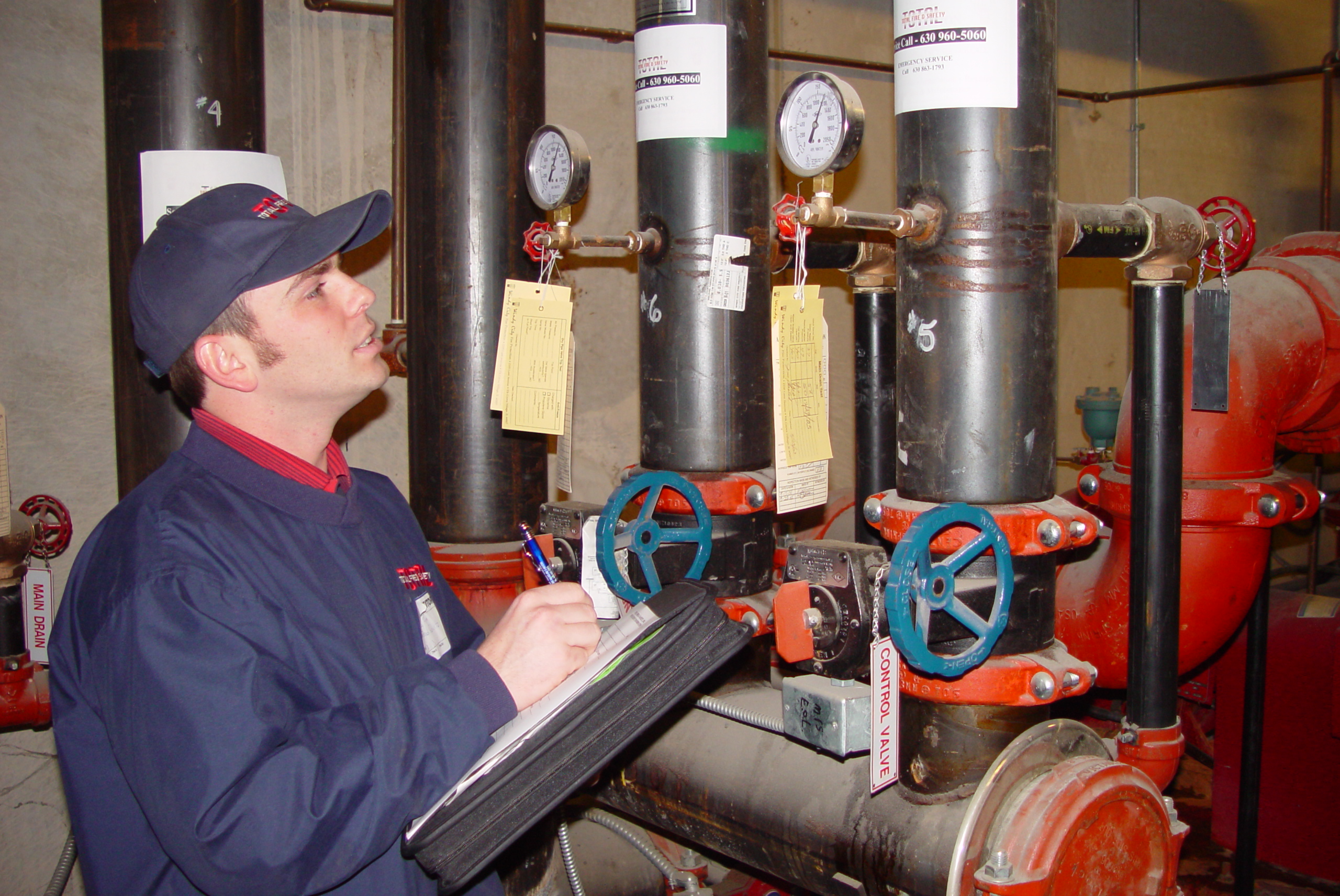
When people think of careers in fire safety in Illinois, they usually think of firefighters. But what about the folks who prevent the fires in the first place? These dedicated professionals work in the area of commercial fire safety. They help commercial buildings and residential dwellings stay up to code with the fire safety equipment, and thus, can save lives indirectly by keeping people safe and prepared for fire emergencies.
Providing fire safety to any business, at any level, starts with teamwork. If one aspect of fire safety fails (sprinkler, extinguisher, or alarm), it can make the difference between life and death. All the fire safety components work within a life safety ecosystem, which includes government code compliance, a skilled workforce, and an investment in safety equipment, installation, and training. As part of a commercial fire safety team such as Total Fire and Safety, you are part of a life-saving mission. We provide customers their first offense in putting out a fire on their premises.
According to the Bureau of Labor Statistics and their Occupational Outlook Handbook, the projected employment change for security and fire alarm system installers is expected to grow 14 percent, which is faster than the average career. They are expecting growth of 10,400 new jobs between 2016-2020. Currently, Illinois, the home state of Total Fire & Safety, is among the states in the nation that employs the most installers in this field. (see chart below).
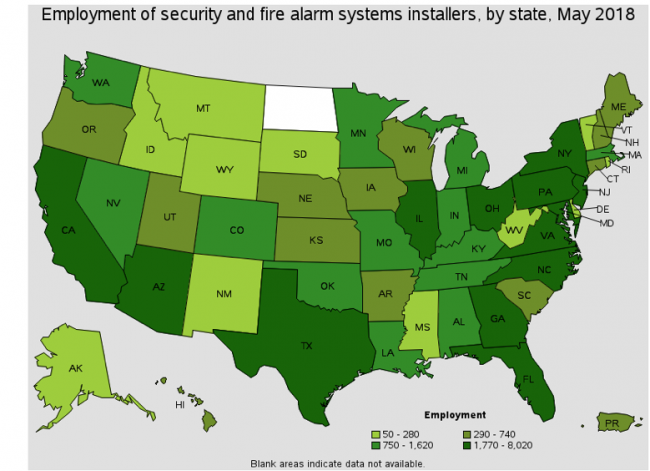 Chart reprinted from Bureau of Labor Statistics, Occupational Employment and Wages, May 2018, 49-2098 Security and Fire Alarm Systems Installers
Many of the careers in fire safety require a high school diploma or equivalent but mainly, on-the-job training. At Total Fire & Safety, we have a vigorous employee training program that prepares our people for many of the jobs that are so needed in the industry, such as customer service, sales representatives, dispatchers, fire alarm service technicians, fire extinguisher technicians, fire sprinkler service technicians, etc. We even have an on-site training facility (pictured below) where we regularly host classes and training modules for TFS employees.
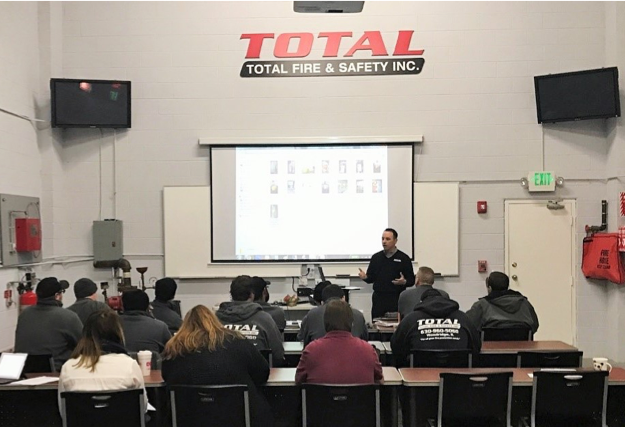
You’ve heard the phrase teamwork makes the dream work, right? At Total Fire and Safety we are always looking for dedicated professionals to join our commercial fire safety team, which has that has provided fire safety for over 30 years. If you are looking for employment or are ready for a career change, join Total Fire and Safety and see how working as a team can save lives.
To learn more about the opportunities available and experience needed at Total Fire and Safety, visit our employment page or search us on Indeed.
Category: Business Safety, Fire Safety, Total Fire and Safety Tags: commercial fire protection, commercial fire safety, employee training, fire and safety equipment, fire safety, fire safety training, Fireextinguishertraining, firesafetytraining, Total Fire and Safety, training | Comments Off on Find Your Career in Illinois Commercial Fire Safety
-
February 27, 2019 by Total Fire and Safety
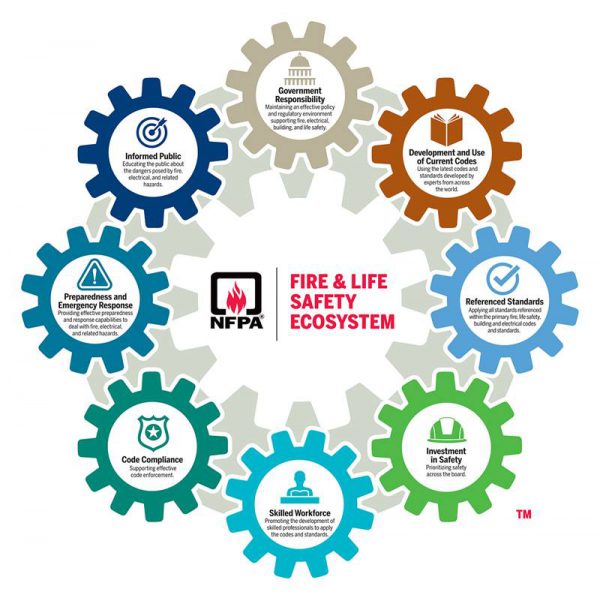 Image: NFPA Website The fire and life safety ecosystem led the discussion at the 2018 NFPA Conference and Expo. What is the fire and life safety ecosystem? Like any ecosystem, it is comprised of elements that work together to achieve a functioning system—in this case, eight separate elements that have to do with fire and safety. Several of them are the responsibility of the government, while many call upon the public to enforce and deliver. Regardless of who is charged with the responsibility, the goal throughout the ecosystem is to prevent major disasters from fire, electrical, and other hazards. When tragedies occur, it is likely there was a breakdown in one or more parts of the fire and life safety ecosystem. Here are the eight components relating to the fire and life safety code:
- Government Responsibility: Policy makers must maintain effective policy and regulatory environment and not prioritize politics over the public’s safety. When life safety codes are stripped for any reason, people’s lives are endangered for the sake of political gain.
- Development and Use of Current Codes: Government and building designers must implement the latest codes and standards or risk losing the latest technology and research in fire, electrical, life safety.
- Referenced Standards: All standards within the fire, life, building, safety, and electrical codes must be addressed or the right products and practices will not be used, possibly leading to disastrous results.
- Investment in Safety: Property managers and need to make an investment in safety to comply with the latest standards and codes. Hiring a company like Total Fire and Safety means an investment in safety. All the latest fire safety technologies are always available from TFS and we can design a program to fit any company’s needs and budget.
- Skilled Workforce: Promote the development of skilled professionals to apply the codes and standards. For over 20 years, TFS has employed highly skilled, highly trained, and highly dedicated workers in order to put customers’ safety above all else.
- Code Compliance: Effective code enforcement is necessary. Fire Marshalls and other officers must conduct regular inspections to ensure safety and code compliance.
- Preparedness and Emergency Response: Provide effective preparedness and emergency response capabilities to deal with fire, electrical, and related hazards. Train employees on emergency equipment, fire safety drills, designated leader in emergencies, etc.. TFS provides training classes for employees, as well as, informative literature on how to react in an emergency and much more.
- Informed Public: Educating the public is important, as is educating businesses about the specific fire hazards in their facilities.
No one cog in the fire and life safety ecosystem can keep us all safe from harm. Even all the pieces together, working in tandem, may not prevent every disaster, but they can certainly prevent many. By practicing and implementing the various areas outlined in the fire and life safety ecosystem, we can all create a safer community. At Total Fire and Safety, we are committed to helping you play your role in the fire and life safety ecosystem. Contact us today to discuss your fire safety needs or call 630-960-5060.
Category: Business Safety, Fire code violation, Fire Safety, Health and Safety, NFPA Compliance, Total Fire and Safety Tags: fire and safety equipment, fire and safety needs, fire and safety solutions, fire safety solution, fire safety training, Total Fire and Safety | Comments Off on What’s a Fire and Life Safety Ecosystem?
-
November 5, 2018 by Total Fire and Safety

Next to the everyday hustle and bustle of the average office, office kitchen fire safety is a secondary concern. However, the National Fire Protection Agency (NFPA) reports that just over one-fifth of office fires begin in the kitchen or cooking area. Twenty-nine percent are started by cooking equipment, the leading cause of fires in the office. Although these fires started small, they caused major structure damage.
With the holidays on the way and more employee parties sure to take place, the office kitchen will be used more than ever. How can you prevent a fire from happening? How do you keep your employees safe and well fed at the same time? Here are four important safety tips to help you get started:
1. Replace worn or frayed power cords.
Inspect power cords on the kitchen appliances. Are the wires exposed? If so, the cord can short out and cause a fire. Encourage your employees to keep an eye out for damaged cords. Be sure to replace them as soon as they are found. This one simple act will keep the office safe.
2. Watch food as it cooks.
It easy to become distracted in the office, whether its fellow coworkers gossiping or doing too many things at once. You wouldn’t leave food unattended at home and the office should not be any different. To ensure food cooks properly, emphasize that employees must stay near appliances as they cook or heat food/beverage. Employees using the kitchen also need to watch for signs of smoke or burning. Doing so will ensure the safety of the entire building.
3. Regularly clean appliances.
We’ve all been there. We stick a (insert food item) in the microwave, oven, toaster, etc., and it explodes or leaves spillage behind. However, we avoid cleaning, commonly thinking someone else will do it. Spills and baked-in foods left behind can cause a fire. Cleaning kitchen equipment after use will prevent grease from accumulating which prevents combustion. These hazards can be avoided easily so remind employees to wipe up spills, food particles left behind, etc.
4. Have employees trained to use a fire extinguisher.
No matter how proactive you and your employees are, accidents still happen. Having staff trained to use fire fighting equipment could mean the difference between a catastrophe or a minor incident. Total Fire and Safety can train you and your employees to use a fire extinguisher, first aid equipment, and other lifesaving safety measures.
With most office fires starting in the kitchen, it is important to educate employees on office kitchen fire safety. Total Fire and Safety (TFS) offers a complete fire training program to educate employees on the proper techniques of fighting a fire. Not only can your employees use these practices in the office, they can also apply them in their home. Keep you, your staff, and your workplace fire safe. Give TFS a call today at 630-960-5060.
Category: Business Safety, Fire Extinguishers, Fire Safety, First Aid, First Aid Kits Tags: commercial fire safety, fire and safety equipment, fire and safety needs, fire and safety solutions, Fire Extinguisher, fire safety, fire safety solution, fireextinguisher, firesafetytraining, first aid | Comments Off on Danger on the Job: Keeping the Office Kitchen Safe
-
October 2, 2018 by Total Fire and Safety
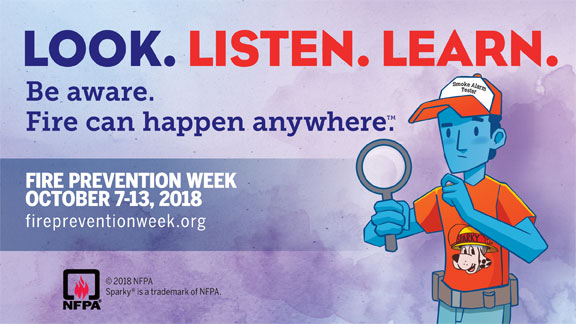
Fire prevention week was instituted in commemoration of the Great Chicago Fire of 1871 which burned from October 8-10, 1871 and took the lives of nearly 300 people. It burned nearly 3.3 square miles of Chicago and left over 100,000 residents homeless.
Forty years after the tragic blaze, the U.S. Fire Marshall used the anniversary to promote fire prevention and fire safety. In 1925, President Calvin Coolidge proclaimed fire prevention week as a national observance and it has become the longest running health observance in the country.
Even though we know more now about fire prevention than ever before and we have better equipment too, the National Fire Prevention Association (NFPA) released a shocking statistic: if you reported a fire in your home, you are more likely to die today than you were a few decades ago. Today’s home fires burn faster, allowing occupants less than two minutes to escape without harm.
Although the messages of Fire Prevention Week primarily focus on home fires, their messages can be applied at any location including businesses, warehouses, and other commercial spaces. Fire prevention week is a time to draw attention to the fire safety practices within your company using the resources provided by fire departments, the NFPA, and companies like Total Fire and Safety.
The following are some initiatives companies can take to observe Fire Prevention Week:
This year, fire prevention week runs October 7-13. The theme is Look. Listen. Learn. Be aware- Fire can happen anywhere. This year’s campaign focuses on basic but essential ways to escape your home fire safely with three simple steps:
- Look for places a fire could begin. Identify potential fire hazards in your workplace and remove them.
- Listen for the sound of the alarm. As soon as the alarm sounds, make your way out of the building at a safe distance from the fire.
- Learn two ways out of every room. Make sure all exits leading outside are free of clutter, unlocked and have emergency lights if necessary.
Fire prevention week is also commemorated at fire stations all over the area with special open houses and related programs. Here’s a roundup of some of the events in the Total Fire & Safety service area. For more information, see the website for each individual fire department.
If we can ever be of help to you during fire prevention week or any other time during the year, call Total Fire and Safety to ensure your business in in NFPA compliance with all of your commercial fire protection at 630-960-5060.
Saturday, Oct. 6
- Tinley Park Fire Department: 17355 68th Court, Tinley Park, 9 a.m. – 1 p.m.
- Schaumburg Fire Department: 950 W. Schaumburg Road, Schaumburg, 11 a.m. – 2p.m.
- Clarendon Hills Fire Department: 316 Park Ave., Clarendon Hills, 11 a.m. – 2 p.m.
- Minooka Fire Department: 7901 E. Minooka Road, Minooka, 11 a.m. – 2 p.m.
- Hazel Crest Fire Department: 2903 W. 175th St., Hazel Crest, 9 a.m. – 12 p.m.
- Bensenville Fire Protection District: 500 S. York Road, Bensenville, 12 – 3 p.m.
- Darien-Woodridge Fire Department: 7550 Lyman Ave., Darien, 10 a.m. – 1 p.m.
Sunday, Oct. 7
- Belvidere Fire Department: 123 S. State St., Belvidere, 1 – 4 p.m.
- Evanston Fire Department: 1817 Washington St., Evanston, 11 a.m. – 3 p.m.• West Chicago Fire Department: 200 Freemont St., West Chicago, 10 a.m. – 2 p.m.
- Cissna Park Fire Department: 206 N. 2nd St., Cissna Park, 11 a.m. – 5 p.m.
- Lake Zurich Fire Department: 321 S. Buesching Road, Lake Zurich, 11 a.m. – 2 p.m.
- Mokena Fire Department: 19853 S. Wolf Road, Mokena, 7:30 a.m. – 12 p.m.
- Peotone Fire Protection District: 7550 W. Joliet Road, Peotone, 11 a.m. – 3 p.m.
Monday, Oct. 8
- Western Springs Fire Department: 4353 Wolf Road, Western Springs, 6 – 8:30 p.m.
Wednesday, Oct. 10
- Downers Grove Fire Department: 6701 Main St., Downers Grove, 6:30 – 8:30 p.m.
Friday, Oct. 12
- Crete Fire Department: 524 W. Exchange St., Crete, 5 – 8 p.m.
- Beecher Fire Department: 711 Penfield St., Beecher, 5:30 – 8:30 p.m.
Saturday, Oct. 13
- Charles Fire Department: 112 N. Riverside Drive, St. Charles, 12 – 3 p.m.
- Harlem Roscoe Fire Protection District: 10544 Main St., Roscoe, 11 a.m. – 3 p.m.
- Schiller Park Fire Department: 9526 Irving Park Road, Schiller Park, 11 a.m. – 2 p.m.
- Northbrook Fire Department: 1840 Shermer Road, Northbrook, 9 a.m. – 12 p.m.
- Crystal Lake Fire Rescue Department: 100 W. Woodstock St., Crystal Lake, 11 a.m. – 2 p.m.
- Glen Ellyn Fire Department: 524 Pennsylvania Ave., Glen Ellyn, 10 a.m. – 1 p.m.
- Channahon Fire Department: 24929 Center St., Channahon, 11 a.m. – 2 p.m.
- Elk Grove Village Fire Department: 101 Biesterfield Road, Elk Grove Village, 12 – 3 p.m.
- Rolling Meadows Fire Department: 2455 Plum Grove Road, Rolling Meadows, 10 a.m. – 2 p.m.
- Lemont Fire Protection District: 15900 New Ave., Lemont, 11 a.m. – 2 p.m.
- River Forest Fire Department: 400 Park Ave., River Forest, 10 a.m. – 2 p.m.
- Northlake Fire Department: 118 E. Parkview Drive, Northlake, 12 – 3 p.m.
- Elgin Fire Department: 650 Big Timber Road, Elgin, 10 a.m. – 3 p.m.
- Prospect Heights Fire Protection District: 10 E. Camp McDonald Road, Prospect Heights, 10 a.m. – 2 p.m.
Sunday, Oct. 14
- Byron Fire Department: 123 N. Franklin St., Byron, 11 a.m. – 3 p.m.
- Manteno Fire Department: 13 S. Walnut St., Manteno, 12 – 3 p.m.
- Elmhurst Fire Department: 601 S. York St., Elmhurst, 12 – 4 p.m.
- North Palos Fire Protection District: 10629 S. Roberts Road, Palos Hills, 7 a.m. – 12 p.m.
- McHenry Township Fire Protection District: 3710 Johnsburg Road, Jonhsburg, 10 a.m. – 1 p.m.
Monday, Oct.15
Romeoville FPD Open House
Saturday, Oct. 20
- Dolton Fire Department: 14022 Park Ave., Dolton 10 a.m. – 3 p.m.
- La Grange Park Fire Department: 447 N. Catherine Ave., La Grange Park, 10 a.m. – 1 p.m.
- Hoffman Estates Fire Department: 225 Flagstaff Lane, Hoffman Estates, 1 – 4 p.m.
- Sycamore Fire Department: 2100 Frantum Road, Sycamore, 11 a.m. – 2 p.m.
Sunday, Oct. 21
- Grayslake Fire Department: 160 Hawley St., Grayslake, 7 a.m. – 12:30 p.m
Total Fire and Safety has a dedicated team of professionals that use the best technology to test and inspect fire safety equipment in any commercial building. TFS also provides training classes to educate employees both in the classroom and on-site. Knowledge is power and the more your employees know, the better they can protect themselves. What better time to spread the word than fire prevention week! If we can help you with your fire prevention in October or anytime, give Total Fire and Safety a call at 630-960-5060.
Category: Fire Extinguishers, Fire Extinguishers, Fire Safety, Sprinkler Systems, Total Fire and Safety Tags: fire and safety equipment, fire and safety needs, fire and safety solutions, Fire Extinguisher, lifesafety, Total Fire & Safety, Total Fire and Safety, training | Comments Off on Are Your Employees Ready for Fire Prevention Week?
|

|
|
|
|
|
|

 Facebook
Facebook
 Instagram
Instagram
 LinkedIn
LinkedIn











